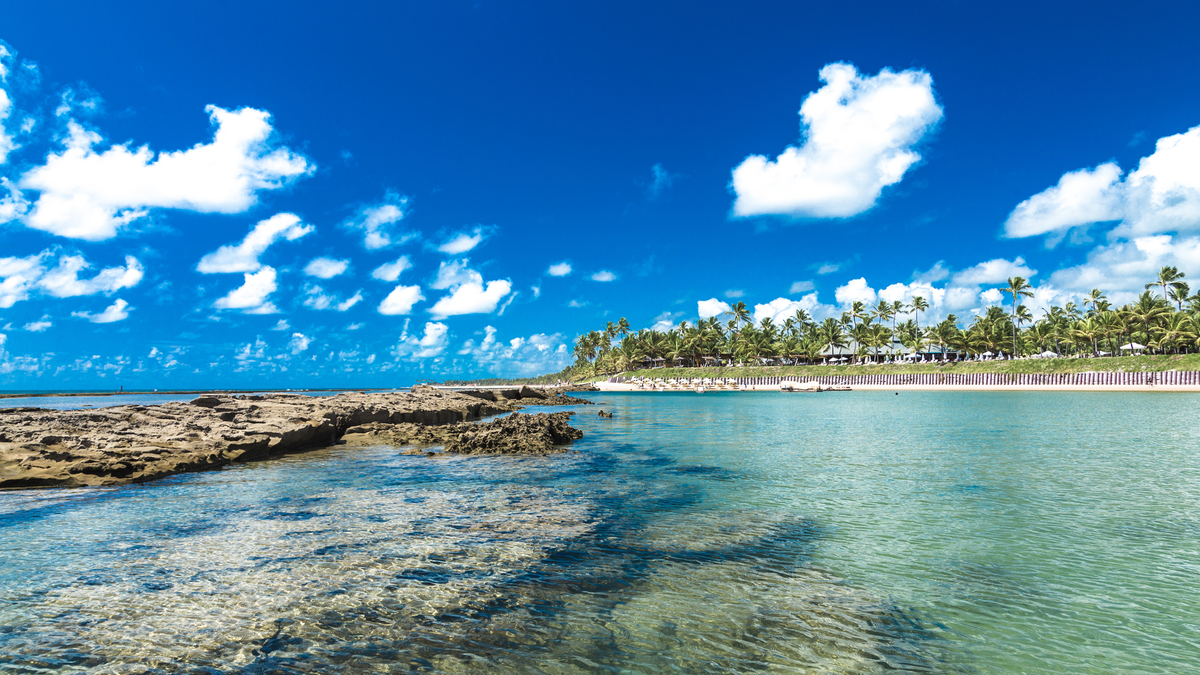What's Brazil Like In March? Weather, Tourism, & More
Searching for what is it like to visit Brazil in March? Discover everything you need to know about the weather, demand, pricing, and the best things to do.

Wondering what it’s like visiting Brazil in March? Let’s dive into everything you need to know about traveling to Brazil in March—from the weather and prices to how busy it gets and the best things to do.
Brazil’s Weather In March
March signals the shift from summer to autumn in Brazil, bringing warm but slightly cooler temperatures than February. The rainy season continues in many regions, but rainfall begins to taper off in the southeast and south, while the northeast enjoys mostly sunny days. Expect a mix of warm, sunny weather and occasional showers.
- Rio de Janeiro & Southeast: Warm and humid, with highs of 27–32°C (81–90°F). Afternoon showers are common but less intense than February, often clearing quickly for pleasant evenings.
- Northeast Coast (Salvador, Recife, João Pessoa): Hot and sunny, with highs around 29–31°C (84–88°F). Minimal rainfall makes it ideal for beach activities, with only brief showers possible.
- Amazon & Pantanal: Still in the wet season, with frequent rain and high humidity, temperatures ranging from 26–31°C (79–88°F). Flooded landscapes enhance river-based wildlife tours, though some trails may be muddy.
- South (Florianópolis, Curitiba): Milder, with highs of 24–29°C (75–84°F). Occasional rain occurs, but days are increasingly clear as autumn approaches.
Clothing Needed For Brazil In March
March’s warm, humid conditions call for lightweight, breathable clothing. Pack shorts, t-shirts, and swimwear for beach days, especially in the northeast. A light jacket or sweater is useful for cooler evenings in the south or southeast, like Curitiba. Sunglasses and high-SPF sunscreen are must-haves for sunny days. A compact umbrella or lightweight rain jacket is essential for sudden showers, particularly in the southeast or Amazon. For nature excursions in the Pantanal or Amazon, include long sleeves, lightweight pants, and sturdy, waterproof shoes for muddy trails and mosquito protection. Be prepared for warm days, cooler nights, and occasional rain!
Brazil’s Sunrise & Sunset In March
As Brazil moves into autumn, March offers slightly shorter daylight hours than February, but still plenty of time for exploration:
- Average Daylight Hours: Around 12 hours per day.
- Rio de Janeiro: Sunrise around 6:00–6:15 AM, sunset about 6:15–6:30 PM.
- Salvador: Sunrise near 5:45–6:00 AM, sunset around 5:50–6:05 PM.
- Curitiba: Sunrise about 6:10–6:25 AM, sunset near 6:20–6:35 PM.
These long days provide ample time for beach trips, cultural experiences, and outdoor adventures.
March is Shoulder Season in Brazil
March is a shoulder season, with the peak summer crowds of January and February (especially Carnival, typically in February) fading as local school holidays end. This makes it a great time for a less crowded visit.
- Tourism Demand: Moderate, with early March still busy in coastal cities like Rio and Salvador due to lingering summer visitors. Crowds decrease later in the month, making attractions more accessible.
- Pricing: Flights and accommodations are more affordable than February’s peak, with good deals available, especially if booked a few weeks in advance.
- Atmosphere: Relaxed yet vibrant, with warm weather and a post-Carnival calm creating an inviting vibe for travelers.
March is ideal for those seeking pleasant weather and fewer crowds while enjoying Brazil’s diverse attractions.
Best Things To Do In Brazil In March
March’s warm weather, reduced rainfall in some areas, and quieter vibe make it perfect for a mix of coastal, cultural, and nature-based activities. Indoor options are included for rainy days, especially in the southeast and Amazon.
- Relax on Northeast Beaches: Enjoy the sunny shores of João Pessoa’s Tambaú Beach or Recife’s Boa Viagem, where warm, clear skies are ideal for swimming and sunbathing.
- Explore Urban Culture: Rainy in the southeast? Visit São Paulo’s Ipiranga Museum for a deep dive into Brazilian history or Rio’s National History Museum for fascinating exhibits on the country’s past.
- Spot Wildlife in the Pantanal: March’s flooded wetlands in the Pantanal are perfect for boat tours to see capybaras, caimans, and migratory birds, with slightly drier conditions than February improving access.
- Visit Fernando de Noronha: This island paradise off the northeast coast is less crowded in March, with warm seas ideal for snorkeling and spotting sea turtles during their nesting season.
- Discover Brasília’s Architecture: Explore the capital’s iconic modernist buildings, like the Cathedral of Brasília, with mild weather perfect for walking tours.
- Hike in Tijuca National Park: Trek through Rio’s Tijuca National Park for lush trails and waterfalls, with March’s milder temperatures and fewer crowds enhancing the experience.
- Celebrate Local Markets: Visit Salvador’s Mercado Modelo for crafts and live music, a vibrant indoor-outdoor experience that shines in March’s sunny weather.
Why Visit Brazil In March?
March offers a perfect blend of warm weather, fewer crowds than summer, and diverse activities, from northeast beaches to Pantanal wildlife adventures. With occasional rain easily managed by indoor attractions like museums, it’s an excellent time to experience Brazil’s vibrant culture and natural beauty while staying safe and prepared.
Discover More About Brazil
When Will You Be Visiting Brazil?
- What's Brazil Like In January?
- What's Brazil Like In February?
- What's Brazil Like In March?
- What's Brazil In April?
- What's Brazil Like In May?
- What's Brazil Like In June?
- What's Brazil Like In July?
- What's Brazil Like In August?
- What's Brazil Like In September?
- What's Brazil Like In October?
- What's Brazil Like In November?
- What's Brazil Like In December?




